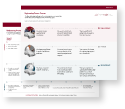Developing a new vehicle is no easy feat. Companies often need managers or collaborators to move that vehicle from concept to concrete. At New Eagle, when we work with companies on a development project, we break our process down into four broad steps:
- Architecture and Requirements (“System Definition”)
- Concept Validation (“Prototype”)
- Design Validation (“Reproducibility”)
- Product Validation (“Production”)
After a New Eagle project goes through the early stages of information-gathering and system definition, it’s on to the hands-on adventure of building a prototype. Creating a physical sample serves to validate the concept and system parameters we developed in Phase 1.
Depending on the project, we might create a prototype of a fully integrated vehicle—making use of our Vehicle Integration Center, the working-garage space where our designs come to life. Not every design is for something that needs garage space, though. We also create individual vehicle components and subsystems, as well as customized ECUs.
What are the steps of Concept Validation?
No matter the project, we break the process down into three steps:
1. Soft design
Our engineers use design tools like Solidworks, MATLAB, and New Eagle’s Raptor software to come up with an electronic design of the prototype. These soft designs don’t yet focus on immediate hardware decisions. Instead, our engineers are considering what functions and capabilities need to be embedded in the design – and what components will work best together.
2. Procurement
After the design stage, we procure any components for the prototype that we don’t already have on hand. Although supply chain issues can impact this stage of the process, our team takes supply availability into account as the design is developed.
3. Integration
New vehicles often push our engineers to combine components in novel ways. Integration is the step that ensures the ECU and other components work together as expected, and that system inputs and outputs operate in the new vehicle environment.
What do clients receive in Phase 2?
In addition to updated artifacts from Phase 1, our clients get the following deliverables during Phase 2:
- a test plan
- a CAD model
- a wiring diagram
- programming files
- data collection/analysis (optional)
- mechanical analysis (optional)
We also provide a program status report, which details our validation findings, and a design validation (DV) plan. As part of the DV plan, clients can also receive drafts for ISO 26262 and DFMEA.
ISO 26262 is the international standard for road vehicle functional safety, and applies to safety-related systems including one or more electrical and/or electronic (E/E) systems. Design Failure Mode and Effect Analysis (DFMEA) is used to recognize and evaluate potential failures in a system, product, or process with the aim to mitigate and eliminate them.
Clients see final drafts of ISO 26262 compliance protocols and DFMEA plans in Phase 3 of our process. Learn more about Reproducibility, or Design Validation, in our next installment.




